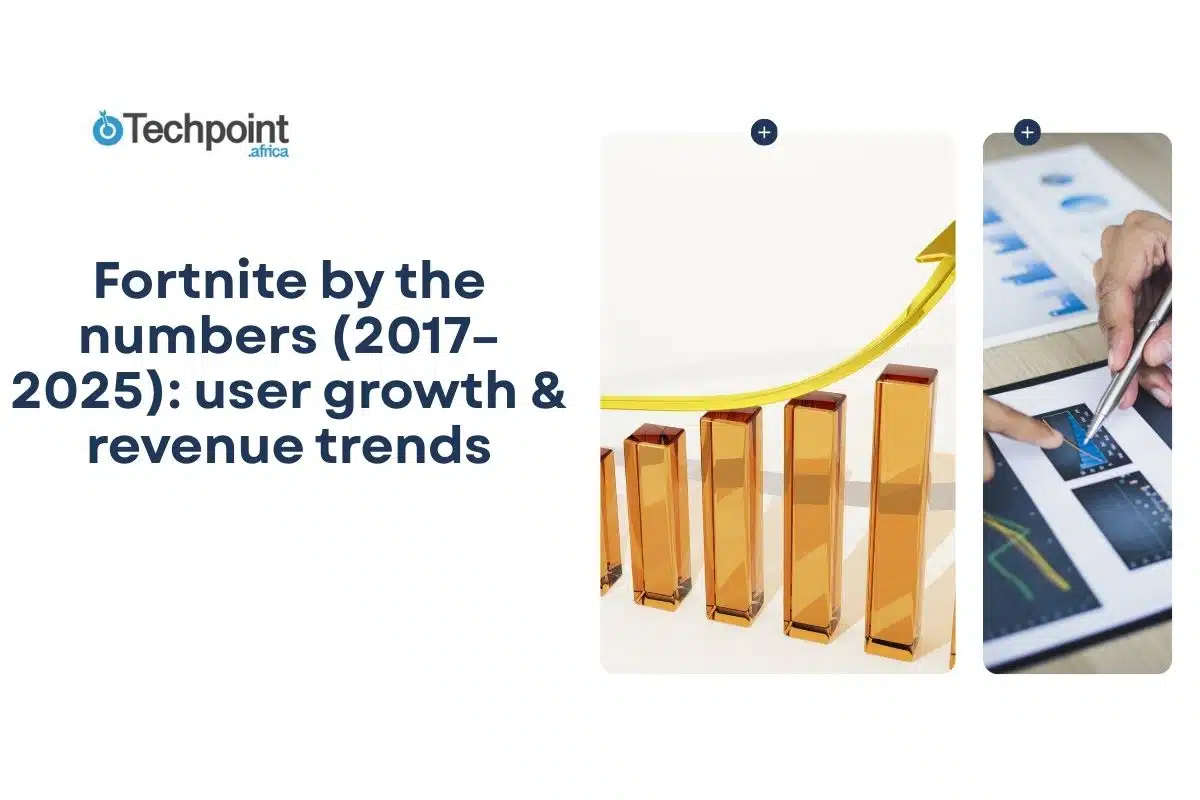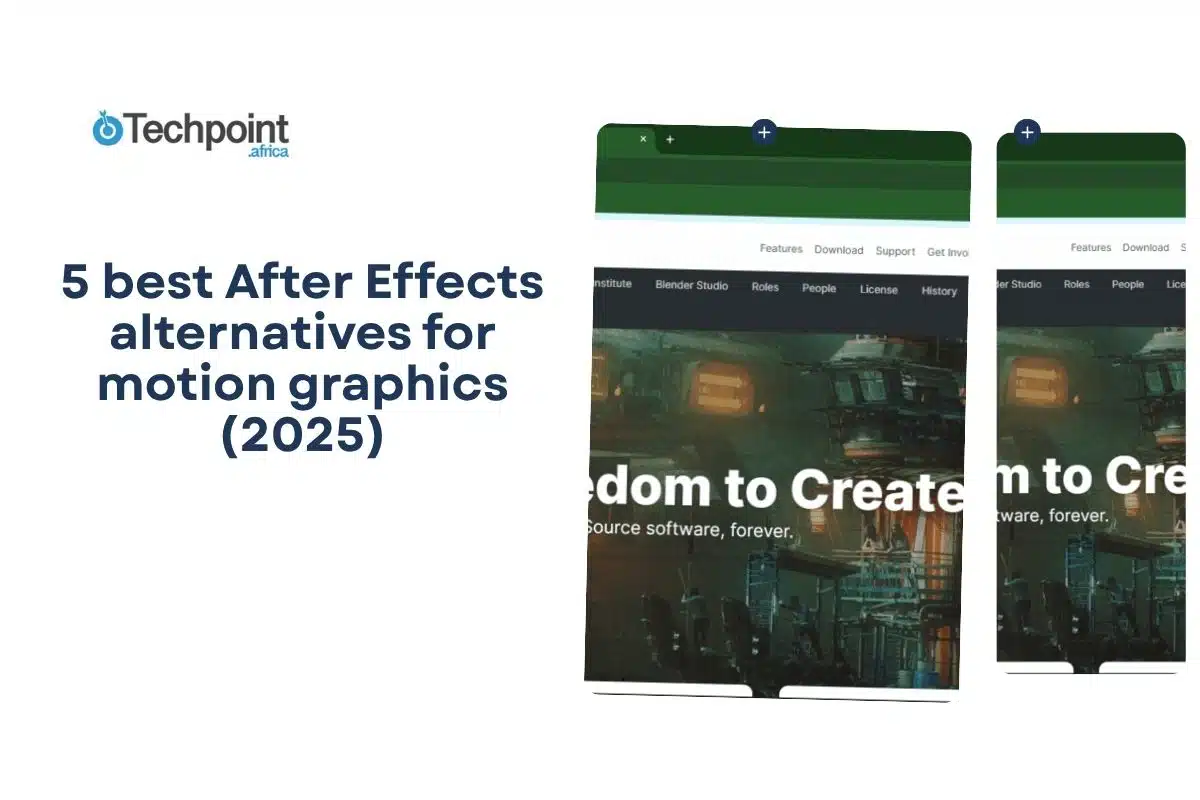I’m not a serious gamer, just a hobbyist at best. I die in Call of Duty more than I shoot, and I’ve quit more games mid-way (because I was losing) more than I’d care to admit. But serious gamers fascinate me to no end.
So when Fortnite dropped in 2017, I neither cared for it very much nor expected it to become the cultural juggernaut it is today. But here we are in 2025, and the numbers are wild, astounding even a non-gamer like me. It’s honestly hard to imagine the current online gaming universe without Fortnite in it.
From Twitch streams to Travis Scott concerts hosted entirely in-game, this once-simple battle royale has evolved into something far bigger. From being just a game, it has become a digital hangout, a fashion show, a concert venue, and a billion-dollar business rolled into one. The cross-platform game didn’t just ride the live-streaming wave; it helped build it.
If you’re looking for hard data on Fortnite’s user growth, revenue jumps, and engagement trends over the years, you’re in the right place.
In this deep dive, I’ll walk you through how Fortnite’s player base expanded year by year, where the money came from (spoiler: it’s not just skins), and how the game stacks up against competitors like PUBG and Apex Legends. You’ll also get a 2025 snapshot of who’s still playing, where they are, and why that matters for marketers, game devs, and trendwatchers alike.
TLDR: Key takeaways from this article
- Fortnite’s player base exploded from 30 million users in 2017 to over 650 million in 2025, thanks to viral events, creative tools, and smart crossovers.
- Despite market shifts, Fortnite has consistently remained a top earner, pulling in an average of $5 billion yearly.
- Gen Z and Gen Alpha dominate the player base in 2025, with growing traction among younger players in regions like Southeast Asia and South America.
- Compared to Apex and PUBG, Fortnite leads in cultural relevance, community tools, and long-term engagement, though competitors still shine in esports and regional niches.
- Looking ahead to 2026, Unreal Editor for Fortnite (UEFN), the creator economy, and AI-generated maps are Fortnite’s biggest growth bets, but player fatigue and legal pressures remain real risks.
Understanding Fortnite
Let’s rewind to 2017. Epic Games launched Fortnite, and if you had told me back then that this cartoony, post-apocalyptic zombie survival game would one day become a metaverse-lite economy, I would’ve raised an eyebrow mid-scroll.
Technically, Fortnite started with Save the World, a cooperative, story-driven shooter that had all the trappings of a premium title. It wasn’t free. It wasn’t viral. And honestly, it wasn’t what put Fortnite on the map. Following its paid-for access in 2017, players were expecting a free version. But Epic Games decided to keep it premium by making its game available on macOS, Microsoft Windows, Xbox One, and PlayStation 4.
That moment came when Fortnite: Battle Royale dropped. Free to play, cross-platform, and addictive in all the right ways, it took everything people loved about survival shooters and gave it a fun, fast-paced, build-as-you-go twist. The rest, as you know, is video game history.
Fortnite overview
Here’s a quick overview of the Fortnite universe:
| Platform | Fortnite |
| Launch year | 2017 |
| Developer | Epic Games |
| Headquarters | Cary, North Carolina |
| Key people | Tim Sweeney (CEO), Donald Mustard (CCO) |
| Business type | Private |
| Industry | Gaming |
| Registered users (2025 estimates) | 650 million |
| Monthly active users (MAUs) | 80 million |
| Top player country | United States (21.64% of global players) |
| Most common age group | 18 to 24 |
| Gender split | 89.7% male, 10.3% female |
| Average play time | 6 to 10 hours per week |
Fortnite user growth and engagement
If you want to understand how Fortnite went from a niche Player versus Environment (PvE) survival game to one of the most influential cultural forces of the 2010s and 2020s, the user stats tell the story best.
So let’s break it down, from player surges and retention to the digital events that broke the Internet.
Registered users over time
Fortnite’s number blew up in a relatively short time. When it launched in the second half of 2017, Fortnite had about a million registered players in its first month. That number is modest by today’s standards, but impressive for a brand-new IP with no household name clout. Fast forward to the end of that same year, and we were looking at 30 million.
By early 2018, that number had already surged to 45 million. And just a year in, Fortnite hit 200 million players. Today, there are more than 650 million registered users.
Here’s the growth timeline at a glance:
| Year | Registered users | What happened? |
| 2017 | 30 million | Early Save the World adopters + Battle Royale beta buzz |
| 2018 | 200 million | Battle Royale goes viral, with streamers, memes, and full takeover |
| 2019 | 250 million | Marshmello concert and World Cup build esports momentum |
| 2020 | 350 million | Pandemic lockdown + Travis Scott’s in-game event |
| 2021 | 400 million | Epic expands to more regions, gains headlines during Epic v. Apple legal battle |
| 2022 | 450 million | Steady growth, new mechanics & strategic collaborations |
| 2023 | 500 million | Chapter 4 content surge + Unreal Engine 5 graphics revamp |
| 2024 | 600 million+ | Expansion to new devices + creative 2.0 maps |
| 2025 | 650 million+ | Continued content drops, brand partnerships, creator economy |
If Fortnite were a country, it would be the third-largest in the world by population, right behind India and China. And it’s not just people signing up and disappearing. Fortnite still pulls an average of 1.5 million daily players in 2025. Meanwhile, the Fortnite website sees 45.7 million monthly visits from 17.4 million unique user, many of them browsing the item shop or queueing up directly through their browser.
Monthly active users (MAU)
The game saw its first massive MAU spike back in September 2018, hitting 78.3 million players. Then came the pandemic, and Fortnite thrived. By June 2020, it had climbed to 80.4 million MAUs, riding the wave of worldwide lockdowns and jaw-dropping in-game events like The Device and Travis Scott’s Astronomical, which alone pulled over 12 million concurrent viewers.
And just when you thought it might plateau? Fortnite leveled up again.
By 2023, the MAU count jumped to 126 million monthly active players, according to Epic’s own 2025 update. Last holiday season, the game hit an all-time high: 110 million monthly actives in a single month. Fortnite hasn’t just maintained relevance—it’s deepened its grip.
Today, Fortnite regularly holds steady at around 80 million monthly active users. For context, that’s roughly Germany’s population logging in monthly.
So, what’s fueling this continued dominance?
- Next-gen console support (PS5, Xbox Series X).
- Cloud gaming accessibility.
- Mobile reboots (Fortnite on iOS, Android via cloud streaming).
- Cross-platform play and Game-as-a-Service consistency.
- Esports relevance and content creator ecosystems.
- A never-ending stream of updates, skins, and crossover events.
- Emerging tech like VR collabs and AI-assisted gameplay keeps Fortnite innovative.
How many people play Fortnite?
As of January 2025, an average of 2,167,950 people logged into Fortnite every single day. That’s up slightly (by 0.08%) from December 2024’s 2,166,185 users.
But there’s a bigger story behind the decimal.
Back in April 2024, Fortnite hit a recent peak with 2.38 million daily active players. Since then, the numbers’ slid by 42% over nine months. That’s not a collapse, but it does hint at either player fatigue, fierce competition, or good old market saturation.
Here’s a quick look at the daily player count across recent months:
| Month | Fortnite daily active Players | Peak users |
| January 2025 | 2,167,950 | 2,447,336 |
| December 2024 | 2,166,185 | 4,789,430 |
| November 2024 | 2,019,581 | 14,343,880 |
| October 2024 | 1,378,359 | 5,641,544 |
| September 2024 | 1,386,548 | 2,681,441 |
| August 2024 | 1,335,500 | 3,235,781 |
| July 2024 | 1,159,840 | 2,882,945 |
| June 2024 | 1,259,679 | 2,128,213 |
| May 2024 | 1,180,054 | 2,420,862 |
| April 2024 | 1,442,685 | 2,861,907 |
| March 2024 | 1,865,594 | 5,152,863 |
| February 2024 | 2,009,266 | 4,469,098 |
| January 2024 | 2,385,906 | 4,894,554 |
Source: activeplayer.io.
Peak concurrent players
If you’ve ever logged into Fortnite during a major event, you know the feeling: lag, lights, and the eerie sense that you’re sharing a moment with millions of other players. They’re full-blown cultural spectacles.
Over the years, Fortnite has had several record-shattering moments when players flooded in at the same time. Here are some of the biggest:
| Event | Year | Concurrent players |
| The Big Bang Event: A New Beginning for Fortnite | December 2023 | 11.6 million |
| Fortnite OG | November 2023 | 44.7 million |
| Ariana Grande Rift Tour | August 2021 | 10.7 million live players |
| Galactus Event | November 2020 | 15.3 million |
| Travis Scott: Astronomical | April 2020 | 12.3 million (in-game only) |
| Marshmello Concert | February 2019 | 10.7 million |
| The End (Black Hole) | October 2019 | 8.4 million in-game, 7 million+ watching across Twitch, Twitter, and YouTube |
| Destruction of the Purple Cube | November 2018 | 8.3 million |
To put it in perspective, that’s the population of a medium-sized country tuning in, not for a concert ticket or a soccer match, but for a virtual moment in a game. It’s these milestone moments that remind me why Fortnite has always been more than “just a battle royale. It’s a digital venue. A concert hall. A social hangout. A proving ground. A mini-metaverse that’s still defining what interactive entertainment can look like.
Fortnite player average play time
It’s 2025, and I still can’t imagine clocking tens of hours on any game in a week. But that’s just me, a non-gamer. But Fortnite players are a different breed.
According to a 2020 survey, Fortnite users spend a median of 6 to 10 hours per week in-game. That might seem manageable until you realize how many of them push way past that.
Let’s break it down:
| Weekly hours spent | Percentage of players |
| Less than 5 hours | 36% |
| 6 to 10 hours | 34% |
| 11 to 15 hours | 17% |
| 16 to 20 hours | 8% |
| 21 hours or more | 5% |
So yes, 70% of Fortnite players play under 10 hours per week, but there’s still a die-hard 5% logging over 21 hours weekly. That’s three hours a day, every day. For context, the average American gamer (in general) spent 14.8 hours per week gaming in 2020, and a good chunk of that likely went to Fortnite.
Fortnite hours watched streaming
I’ve always admired how streaming can turn regular folks into mini-celebrities. And Fortnite practically built that hype machine.
From the moment Ninja and DrLupo dropped into Tilted Towers on Twitch, Fortnite became more than a game; it was a spectator sport. Even now, long after the initial frenzy cooled, Fortnite continues to pull serious streaming numbers.
Here’s how it’s looked over the years:
| Year | Hours watched |
| 2019 | 1.5 billion |
| 2020 | 1.7 billion (peak) |
| 2021 | 1.2 billion |
| 2022 | 738 million |
| 2023 | 751 million |
Source: Stream Hatchet.
Fortnite usage by device
I always assumed most Fortnite players were hunched over PCs with custom RGB setups. Turns out the console is the real MVP. According to Newzoo, a whopping 78% of Fortnite players prefer consoles. That stat made me pause.
Let’s break down the money side real quick. From March 2018 to July 2020, PlayStation 4 alone generated 46.8% of Fortnite’s revenue. Xbox One added another 27.5% to the pot. The remaining 18.7% came from Nintendo Switch, Android, and PC combined.
But what about teens in the U.S., Fortnite’s bread-and-butter demographic? Turns out that 46% of them in the United States play Fortnite on smartphones, while 69% of teens play it on a console. While the console is undoubtedly the top pick, mobile’s not lagging. The proportion of them playing the game on their computer stands at 28%.
Annual cumulative Fortnite tournament prize pool
Fortnite had about $79.12 million in the cumulative tournament prize pool in 2019. A year later, that number came to more than $8.3 million.
Here’s how the annual cumulative tournament prize pool worldwide has looked from 2018–2023:
| Year | Annual cumulative tournament prize pool |
| 2018 | $19.93 million |
| 2019 | $79.12 million |
| 2020 | $13.11 million |
| 2021 | $22.34 million |
| 2022 | $17.32 million |
| 2023 | $19.64 million |
| 2024 | $12.85 million |
Source: Statista.
Fortnite revenue and monetization
I’ve never spent a dime on Fortnite skins or any game asset, for that matter. However, after researching this section, I feel inclined to revisit Epic and ask how they conceived this revenue-generating behemoth.
Let’s start with how the company makes money.
How does Fortnite make money?
How much money does Fortnite make in a year?
Epic’s revenue growth has been staggering. In 2018, only a year after they popped into existence, Fortnite made $5.4 billion. That’s not a typo. And even though there were a few dips along the way due to legal battles, burnout, and other things, Fortnite remained a revenue monster.
Here’s the annual breakdown from 2017–2025:
| Year | Estimated annual revenue |
| 2017 | $400 million |
| 2018 | $5.4 billion (Breakout year) |
| 2019 | $3.7 billion |
| 2020 | $5.1 billion (Pandemic year) |
| 2021 | $5.36 billion (Legal battle with Apple/Google) |
| 2022 | $5.55 billion |
| 2023 | $5.63 billion |
| 2024 | $5.82 billion |
| 2025 | $6.01 billion (projected) |
| 2026 | $6.21 billion (projected) |
A closer look: Fortnight revenue in 2019
By 2019, Fortnite was already three years into the game. A typical time for the revenue run to hit a roadblock, but Epic still managed to squeeze serious cash out of their event calendar.
| Month, year | Special event, day (type) | Revenue | Compared to the previous month |
| Jan 2019 | Ice Storm, 19 (Major) | $350 million | |
| Feb 2019 | Showtime, 2 (Concert), Earthquake, 14-27 (Minor) | $398 million | + $48 million |
| Mar 2019 | $361 million | – $37 million | |
| Apr 2019 | $321 million | – $40 million | |
| May 2019 | The Unvaulting, 4 (Major) | $420 million | + $99 million |
| Jun 2019 | $272 million | – $148 million | |
| Jul 2019 | The Final Showdown, 20 (Major), Zero Point Destabilization, 20-1 (Minor) | $267 million | – $5 million |
| Aug 2019 | $314 million | + $47 million | |
| Sep 2019 | $200 million | – $114 million | |
| Oct 2019 | The End (Chapter 1), 13 (Major) | $272 million | + $72 million |
| Nov 2019 | $190 million | – $82 million | |
| Dec 2019 | Live At Risky, 14 (Star Wars Collab) | $340 million | + $150 million |
Source: Epic Games, Eurogamer, The Verge, Fortnite Wiki.
Even a cursory glance at the table will show you that special events meant more money. In 2019, months with big in-game events raked in a combined $2.047 billion. Non-event months accounted for $1.658 billion. That’s a 23% bump just from giving players a spectacle.
Cumulative mobile app revenue
Before Epic Games got into a public fistfight with Apple and Google, Fortnite was raking in serious cash from mobile players. I’m talking over $1.65 billion in revenue, all from folks tapping away on their phones and tablets.
Fortnite’s mobile journey officially began in 2018, a year after its launch. At first, it looked like a side hustle. Then in 2019, it exploded. By the time it was booted off the App Store and Google Play in 2020, Epic had already secured serious money.
Here’s how the mobile earnings stacked up:
| Year | Revenue |
| 2018 | 100 million |
| 2019 | 450 million |
| 2020 | 1.1 billion |
Source: business of apps.
Global player spending percentage
Beyond just a game, Fortnite is a virtual runway, a social flex, and a digital mall all rolled into one. And players are opening their wallets.
According to Statista, 77% of Fortnite players have made at least one in-game purchase. That’s right, more than 3 in 4 players have spent real money on cosmetics, dance moves, and all kinds of digital flair. The remaining 21% are still along for the ride (or just spectating from the free seats), while 2% politely declined to say anything at all.
| Money spent on Fortnite | Percentage of players |
| Players who’ve spent money on Fortnite | 77% |
| Players who haven’t spent money on Fortnite | 21% |
| Unspecified | 2% |
Average spending
Back in 2018, the average Fortnite player dropped $84.67 on in-game goodies. Fast forward to 2020, and that number jumped to $102.42 per player. That’s a strong signal that Fortnite’s free-to-play model is anything but “free” in practice.
| Year | Average in-game spending by Fortnite players |
| 2018 | $84.67 |
| 2020 | $102.42 |
Source: Statista.
Where does the money go?
Most of that spending goes to character outfits (aka skins), those stylish personas that make you feel 10x cooler in a lobby.
Here’s the breakdown of what players splurge on:
| Category | Percentage of Fortnite players |
| Outfit and character | 58.9% |
| Gliders | 18.06% |
| Harvesting tools | 13.52% |
| Emotes | 9.52% |
Source: Statista.
Revenue streams: How does Fortnite make money?
Many mistake Fortnite for a free-to-play game. But in practice, it’s actually a free-to-enter economy. The kind where the base game costs you nothing, but somehow your wallet still ends up lighter. Epic Games knew exactly what they were doing here.
1. Downloadable content (DLC): Skins, battle passes, and bundles
For most players, Fortnite’s first purchase is usually something cosmetic. Maybe a cool skin. Maybe the Battle Pass. Then boom, you’re hooked. According to a 2020 survey, 77% of players had spent money in-game, and another 2% gave mysterious “no comment” energy. The average player spent $84.67 in 2018 and $102.42 in 2020.
Skins and Battle Passes are still Fortnite’s financial engine. Every season brings fresh drops: funky outfits, slick gliders, meme-worthy emotes, and weapon wraps that make you feel just a little more dangerous.
Some of them are funny. Others are epic. All of them sell.
2. Crossovers
Fortnite’s IP collaborations are wild. Epic’s managed to turn their game into the ultimate crossover multiverse, pulling in characters, brands, and artists across pop culture:
- Marvel & DC superheroes.
- Star Wars legends like The Mandalorian and Ahsoka.
- Anime icons from Dragon Ball, My Hero Academia, and Jujutsu Kaisen.
- Musicians like Travis Scott, Ariana Grande, and The Weeknd.
- And even Nike and LEGO (2023–24).
These crossovers drive direct revenue. Each collab injects a new wave of purchases and brings in casual fans who might never have touched a shooter before.
3. Merch and media
Fortnite’s become its own lifestyle brand. I’ve seen it in toy aisles, Halloween aisles, even bookstores. And about the streaming charts, Fortnite concerts live there rent-free.
What’s on the list?
- Nerf guns, action figures, Fortnite LEGO sets.
- Music collabs that go from game to Spotify.
- Books, comics, and those weirdly amazing Fortnite lore explainer videos,
Kids want it. Teens flex it. And parents keep swiping their cards. It’s brand domination.
4. The creator economy (UEFN is a game-changer)
When Unreal Editor for Fortnite (UEFN) launched, it cracked open a whole new revenue stream. Suddenly, players weren’t just buying; they were building.
Top creators now make tens of thousands of dollars per month building experiences inside Fortnite. Epic shares the revenue, everyone stays invested, and session times go up.
- More time in-game means more microtransactions.
- More UGC translates to more reasons to log in.
Fortnite player demographics 2025
As new generations age and new ones pop up, Fortnite has gone from “just a kids’ game” to a multigenerational battlefield worldwide. You’ve got preteens building faster than your Wi-Fi can handle and Millennials who remember Tilted Towers like it was a college roommate.
So, who’s playing Fortnite in 2025?
Age groups
The player base now spans from fresh Gen Alpha kids testing their skills to die-hard Millennials still grinding. In all, the distribution of Fortnite players is heavily skewed towards younger players.
Gen Alpha (Ages 10–15)
Gen Alpha is coming in hot. These are the kids who found Fortnite not through ads but through schoolyard hype, Twitch streams, and YouTube Shorts. 40% of Gen Alpha now prefer Fortnite over any other game. You can’t blame them; It’s free, it’s flashy, and it’s where their friends hang out.
Gen Z (Ages 16–25)
This is still Fortnite’s backbone. Gen Z grew up on it, lived through the OG map, and probably stayed up too late for Chapter 2 events. In 2025, 53% of all players fall in the 10–25 age range, with Gen Z alone making up the lion’s share of Fortnite’s daily active users.
Millennials (Ages 26–40)
Plenty of Millennials are still logging on between work meetings and parenting duties. 22.5% of players are aged 25–34, and while most are no longer sweating in competitive lobbies, they’re still down for a late-night squad sesh or some zero-build fun.
| Age | Percentage of Fortnite users |
| 18 to 24 years | 62.7 % |
| 25 to 34 years | 22.5% |
| 35 to 44 years | 12.7% |
| 45 to 54 years | 2% |
| More than 55 years | 0.1% |
Source: Verto Analytics.
Fun fact: Fortnite is the second most popular game among preteens under 13, with 26% of kids in that bracket playing regularly (according to Statista).
Gender split
Fortnite might be free-to-play, but its player base is a whole different kind of exclusive club. By 2025, we’re seeing clear trends in who’s logging on based on gender.
Fortnite’s player base remains predominantly male, with nearly 90% of Fortnite players being male. I’ve known for a while that Fortnite has a male-dominated audience, but in 2025, that gap is still wide. This might have something to do with Fortnite getting booted from the App Store and Play Store, where it had a more balanced mobile crowd.
| Gender | Percentage of users |
| Male | 89.7 % |
| Female | 10.3 % |
Source: business of apps.
Geography: Where in the world are Fortnite players?
Fortnite is a global vibe. That said, 21.1% of all players are still based in the U.S., which works out to a massive 108.2 million players.
Let’s look at the top countries bringing the heat:
| Country | Percentage of players |
| United States | 21.10% |
| Russia | 7.54% |
| Brazil | 5.5% |
| Poland | 5.4% |
| Mexico | 3.36% |
| other | 57.1% |
Source: ActivePlayer.io
Regional summary
- North America & Europe: Still the twin pillars. The U.S., Mexico, Canada, Russia, and Poland are loaded with longtime loyalists and newer casuals alike.
- South America (Brazil): Esports, streamers, and regional tournaments are making Brazil one of Fortnite’s fastest-growing hotspots.
- Southeast Asia: Thanks to better internet access, mobile-cloud gaming, and cultural uptake, countries like Indonesia, the Philippines, and Thailand are coming in strong.
- Others: Still early days, but interest is building in Australia, Africa, and parts of the Middle East. Mobile re-entry and creator tools could be the keys to wider adoption here.
Milestones and growth catalysts
From 2017 to 2025, Fortnite’s journey has been a rollercoaster of mind-blowing events and game-changing updates that kept millions hooked and servers melting under the pressure.
Major events that spiked engagement
Epic Games didn’t just release seasons; they launched experiences, each one a major event that pulled players back in by the millions:
- Season reboots: Every new season brought fresh themes, maps, and mechanics, resetting the hype meter and player curiosity.
- Live events: for instance, The Travis Scott Astronomical Concert in 2020 broke records with 12.3 million players attending simultaneously. It was a virtual music festival unlike any other. Fortnite recorded similar successes the year before (The End/Black Hole) and the year after (Ariana Grande’s Rift Tour).
Marketing and social virality
Social media and influencer magic also powered Fortnite’s rise:
- TikTok dances: Viral emotes and dances brought Fortnite culture into everyday feeds, making the game a household name even outside hardcore gamers.
- YouTube & Twitch streamers: From Ninja’s meteoric rise in 2018 to SypherPK’s strategic gameplay tutorials and new-gen creators, these influencers continuously refreshed Fortnite’s audience.
- Niche collaborations: Partnerships with brands like Balenciaga, LEGO, and Marvel tapped into new communities, attracting fans who might never have played a battle royale otherwise.
Fortnite’s secret sauce is turning each event into a cultural moment that transcends gaming and creates waves far beyond the Battle Bus.
Fortnite vs. competitors
| Feature / Metric | Fortnite | PUBG | Apex Legends |
| User base (2025) | 650 million | 80 million | 120 million |
| Annual revenue | $5.82 billion (202 est.) | $1.1 billion (2024 est.) | $3.4 billion (2024 est.) |
| Cultural impact | Pop culture, collabs | Regional dominance (Asia) | Competitive esports focus |
| Content cadence | Frequent seasonal updates + live events | Slower update cycle | Moderate updates + battle passes |
| Creator tools | Robust UGC ecosystem (maps, mods) | Limited creator tools | Emerging content creation |
| Community engagement | High in social hubs, events | Moderate | Strong esports community |
| Unique strength | Event-based storytelling + monetization loops | Realism & tactical gameplay | Fast-paced, team-based combat |
What Fortnite did differently:
- User-generated content: Fortnite’s early push for creator-made maps and mods built an ecosystem rivals couldn’t match.
- Live events: Epic’s groundbreaking in-game concerts and story events turned players into witnesses of global moments.
- Monetization loops: Skins, battle passes, and collaborations with Marvel, Star Wars, and others created addictive, revenue-driving incentives.
In short, while PUBG and Apex Legends carved out their niches, Fortnite’s relentless innovation and cultural crossovers kept it at the top of the Battle Royale throne.
Battle royale around the world
Fortnite created something massive with battle royale. It has become a global gaming staple, and in some places, it’s more dominant than you’d expect. According to a global survey from 2021, 68% of gamers worldwide played battle royale games. But in certain countries, especially China, Vietnam, and India, the genre is basically a daily ritual.
Here’s a breakdown of battle royale engagement by market, alongside the most-played genre in each country (spoiler alert: casual single-player still holds the throne in most regions):
| Market | % of battle royale players | Top gaming genre | % Difference |
| China | 89.8% | Casual Single Player (93.6%) | 3.8% |
| Germany | 53.6% | Casual Single Player (83%) | 29.4% |
| India | 82.8% | Casual Single Player (93.8%) | 11% |
| Indonesia | 74.6% | Casual Single Player (87%) | 12.4% |
| South Korea | 63.2% | Casual Single Player (79.2%) | 16% |
| UK | 49.4% | Casual Single Player (88.4%) | 39% |
| US | 46.6% | Casual Single Player (85.2%) | 39.6% |
| Vietnam | 84.2% | Casual Single Player (92.6%) | 8.4% |
| Worldwide | 68% | Casual Single Player (87.9%) | 19.9% |
Source: Limelight Networks, Newzoo.
Taking a closer look at the United States, nearly 5 in 10 (46.6%) gamers are active battle royale players. Comparatively, 38% say they do not actively play battle royale games. This means that more US gamers actively play games in this genre (like Fortnite) than do not.
Looking ahead: Forecast to 2026
As we peek into Fortnite’s future, the growth story is evolving, but still packed with promising sparks. Based on current trends, the compound annual growth rate (CAGR) for both user base and revenue is expected to moderate compared to the explosive early years. However, new waves of innovation and audience engagement are set to keep Fortnite relevant well beyond 2025.
Growth projections:
- User growth is forecasted to slow but stabilize, with fresh influxes driven by Creative 2.0 and AI-generated maps that empower players and creators to shape their own experiences like never before.
- Revenue is projected to maintain steady upward momentum, bolstered by diversified streams such as esports tournaments, Web3-powered skins and collectibles, and collaborations with top YouTubers and streamers featuring AI avatars.
Emerging opportunities:
- Esports expansion: Competitive Fortnite remains a key pillar, with rising prize pools and viewership keeping fans engaged.
- Web3 & AI: The integration of blockchain tech for limited-edition skins and AI-driven content personalization could redefine ownership and player creativity.
- Media ventures: Speculation around Fortnite’s foray into animated series, metaverse-style social hubs, and other cross-media plays points to a broader ecosystem beyond the game itself.
Challenges on the horizon:
- Player fatigue: Maintaining excitement amid a crowded gaming scene will require fresh content and community engagement.
- Legal issues: Epic’s ongoing battles with the App Store could impact platform accessibility and monetization.
- Monetization backlash: As player awareness grows, balancing revenue generation with fair pricing and avoiding “pay-to-win” stigma remains critical.
With this dynamic mix of innovation and caution, Fortnite’s 2026 outlook is less about runaway growth and more about sustainable evolution, a lesson in staying ahead without losing the magic.
Conclusion
Fortnite’s rise wasn’t a fluke. It’s the result of relentless innovation and smart strategy. From hitting 100 million registered users in its early years to generating billions in revenue, the numbers tell a story of consistent growth and adaptation.
If there’s one thing to take away, Fortnite user growth reflects the power of evolving with your community, embracing creativity, and doubling down on engagement. For marketers and developers, Epic Games’ playbook offers valuable lessons: build immersive experiences, nurture creator ecosystems, and keep your finger on the pulse of culture.
FAQs about Fortnite by the number
What has been Fortnite’s user growth from 2017 to 2025?
Fortnite grew from tens of millions in 2017 to over 650 million registered users by 2025, with consistent spikes during major events and season launches.
What are the key revenue drivers for Fortnite?
Skins, battle passes, in-game events, crossovers with major franchises, and user-generated content maps are top revenue streams for Fortnite.
How does Fortnite compare to PUBG and Apex Legends?
Fortnite leads in cultural impact and daily engagement, while PUBG dominates in Asia, and Apex Legends has carved out a strong esports niche.
What are Fortnite’s growth projections for 2026?
Growth is expected to stabilize, but with new opportunities in AI-generated content, esports, and expanded media ventures.
How can marketers and developers use Fortnite’s data to inform their strategies?
By studying Fortnite’s user growth, revenue models, and engagement tactics, marketers and developers can benchmark success and innovate within their projects.
Disclaimer!
This publication, review, or article (“Content”) is based on our independent evaluation and is subjective, reflecting our opinions, which may differ from others’ perspectives or experiences. We do not guarantee the accuracy or completeness of the Content and disclaim responsibility for any errors or omissions it may contain.
The information provided is not investment advice and should not be treated as such, as products or services may change after publication. By engaging with our Content, you acknowledge its subjective nature and agree not to hold us liable for any losses or damages arising from your reliance on the information provided.
Always conduct your research and consult professionals where necessary.











